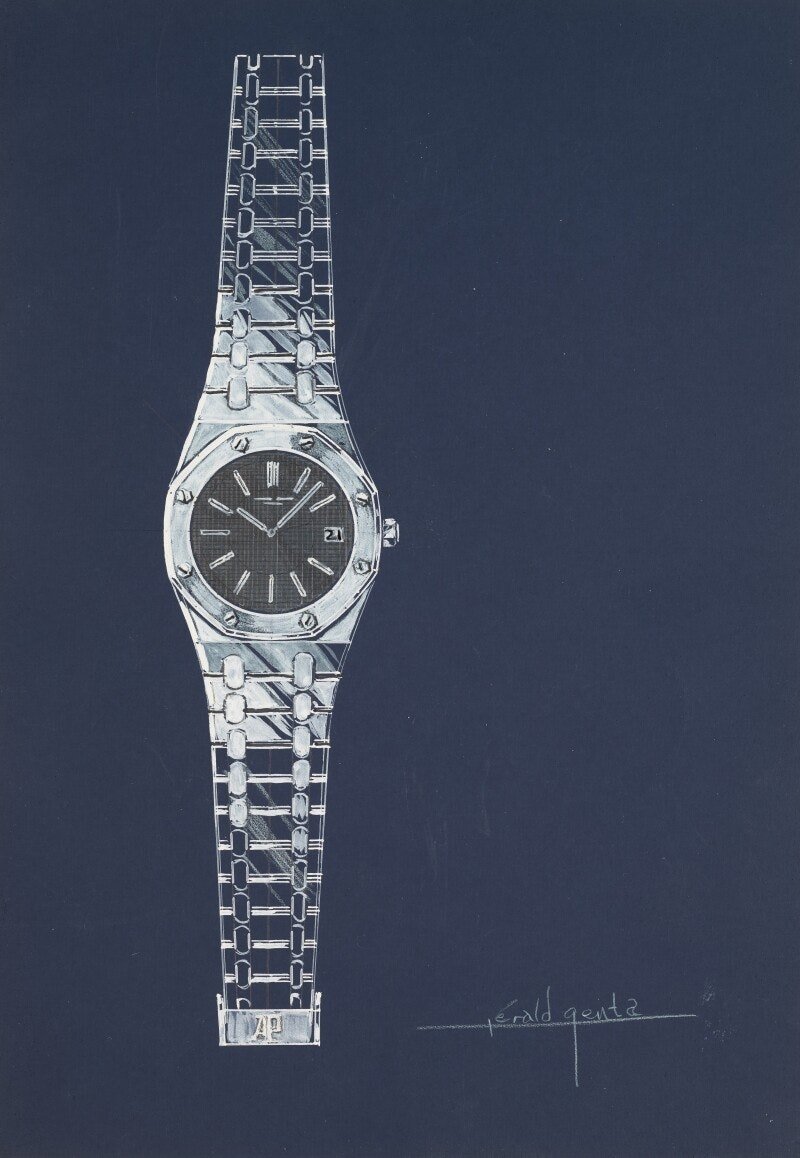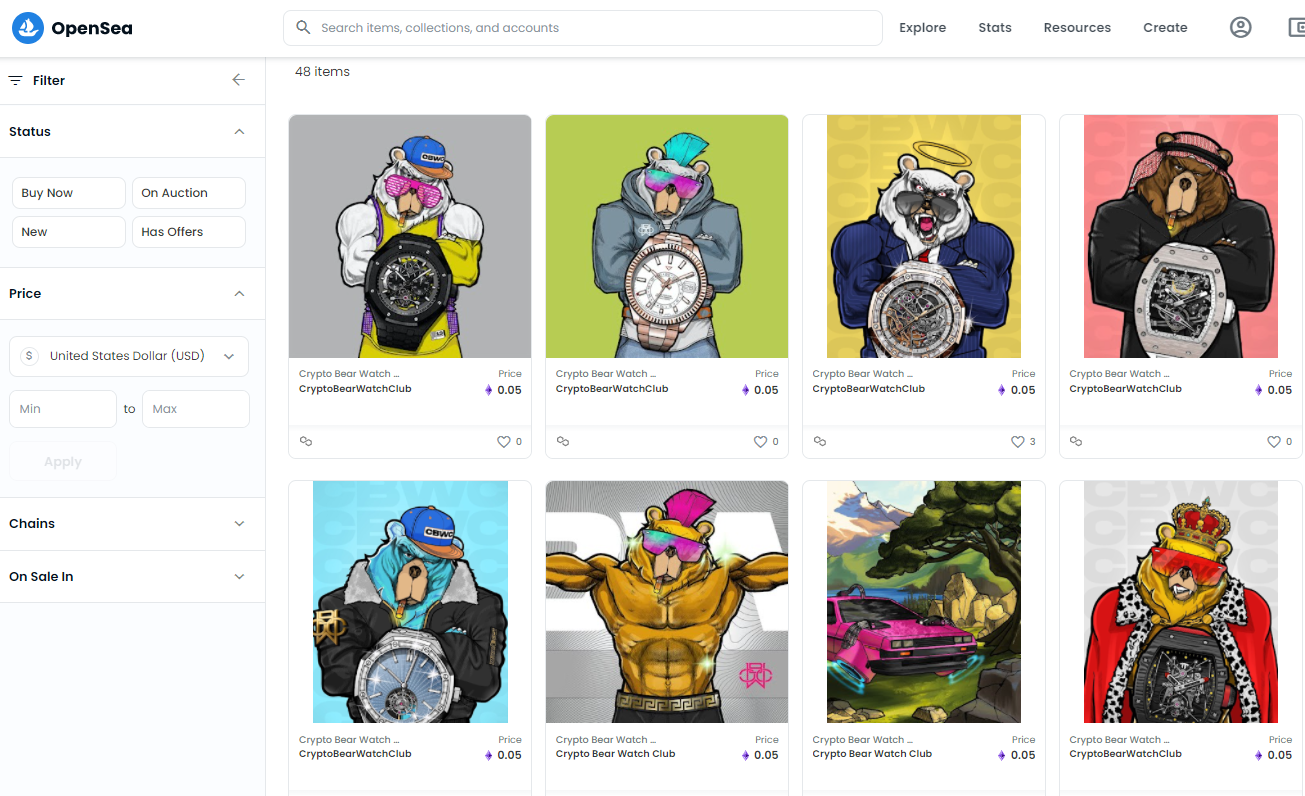The original Audemars Piguet Royal Oak design from Gerald Genta, sold by Sotheby’s for CHF 564,500.
2022 is the 50th anniversary of the Audemars Piguet Royal Oak. This, we already know. All kinds of festivities have been planned. Already, AP has released a slew of new Royal Oak references — 42 in all. Later this year, Phillips will be hosting a Royal Oak-themed auction.
For its part, Sotheby’s is selling a collection of Gerald Genta’s original designs for the Royal Oak and his other iconic designs in a series of auctions, leading up to the sale of Mr. Genta’s personal Royal Oak in Geneva this spring.
The first Gerald Genta: Icon of Time auction closed on February 24, and it’s already posting big numbers.
The headliner of the sale — Lot 1 — an original prototype drawing of the Royal Oak from Gerald Genta, sold for CHF 564,500 (~$609k). The watch is rendered in watercolor on paper measuring about 8 x 6 inches and is signed by Genta.
Lot 2 from Sotheby’s Gerald Genta: Icon of Time auction, a first draft of the Royal Oak. Note the differences to the final product we know and love.
Meanwhile, Lot 2, a first draft of a prototype Royal Oak, sold for CHF 151,200. While Lot 1 looks a lot like the familiar form of the original Royal Oak ref. 5402, this prototype draft is fun for its differences from the final product. The bezel is actually hexagonal, not the octagon that would end up on the final version of the Royal Oak. Further, the dial is rendered in an ice blue, and details like the crown and clasp seem less refined. Beyond these Royal Oak drawings, 29 other lots sold at the Sotheby’s sale. Check out the results here.
Interestingly, each original design was accompanied by a non-fungible token (NFT), the buzziest phrase of the past year. Wristcheck recently asked the question about watches and NFTs in a succinct way: What’s the industry missing? For NFTs to really break through, they need to solve an important problem. So far, much of the focus has been on authentication: Using NFTs as a unique digital identifier paired with a physical watch to give the entire industry more transparency into a watch’s origin and history.
Sure, some brands have experimented with this type of authentication, but it hasn’t caught on, at least not yet. That’s how the NFT is being used with this Royal Oak painting, too. And while it’s interesting that the digital technology is being used to point to and authenticate a physical item, Wristcheck rightly points out that this isn’t the most exciting potential application of crypto in watches:
“While authentication is incredibly practical, this application bears none of the markers of other successful NFT projects. It’s not social. It’s not community-oriented. In today’s world, the most successful NFTs are mission-driven social networks.”
This is where conversations about crypto start to devolve into missives about how living in the metaverse with our Bored Apes and Crypto Punks represent The Last Great Hope for Humanity. But here’s the thing: Some of these crypto projects have built real, functioning communities.
Not what we need from a watch NFT
Sure, there’s a “watch community,” but how functional is it right now? I got into watches right as everyone was disembarking the forums for Instagram, and it’s easy to wax poetic about the good ole forum days (and I’m not even old). However, it’s true that forums encouraged a different type of dialogue. “The discussions were deep, thinking was slow, and engagement with watches meant more than a certain number of likes,” Wristcheck writes.
The watch community should seriously evaluate any tech that promises better community interaction. While Instagram is fine and works on a scale no other platform ever has, it’s pretty limiting. From Wristcheck:
“My sense is that NFTs can create new ways of organizing the watch community. That means, creating online watch communities where most of our “culture” isn’t found in private messages and our cultural rituals online are restricted to liking and commenting emojis on Instagram posts. One way or the other, NFTs are on the cutting edge of online community building, and the entire watch industry should be taking close note.”
Sure, it’s possible crypto is the new multi-level marketing scheme, spawning a dozen Anna Delveys every day. And it’s true that much of the reason I love watches is because they’re a physical escape from the increasingly all-consuming digital world (or metaverse), if only for a brief and blissfully naive oscillation of a mechanical escapement. But if there’s any technology that allows the watch community to build a better community, it’s worth paying attention to.


